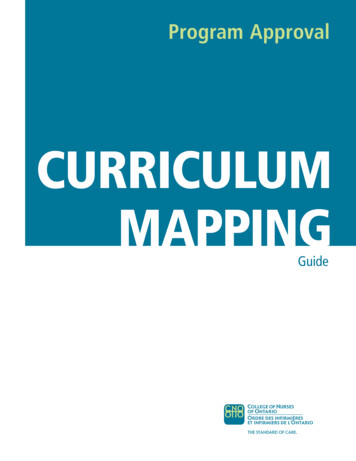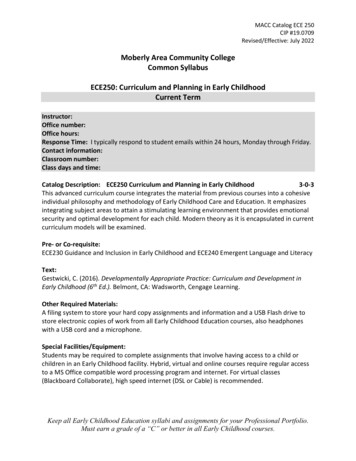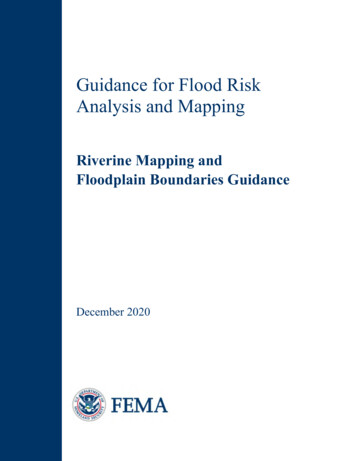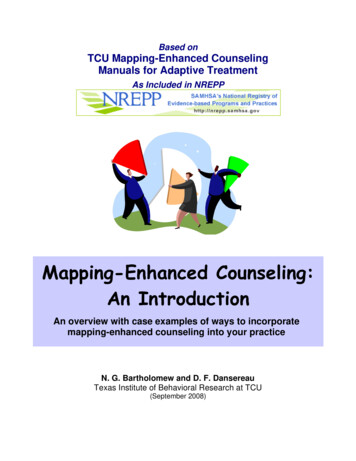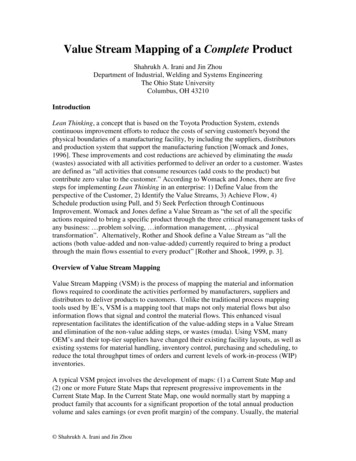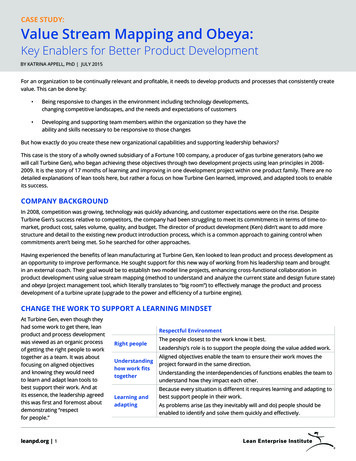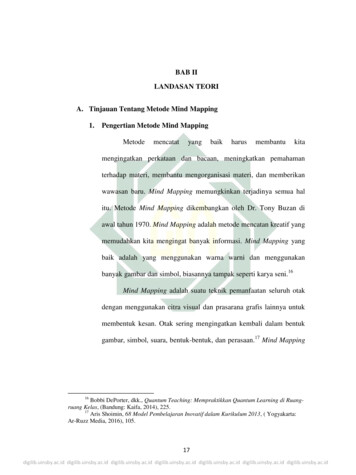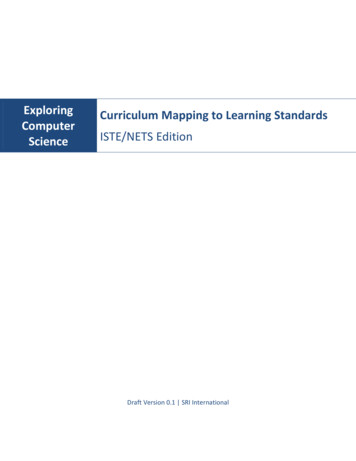
Transcription
ExploringComputerScienceCurriculum Mapping to Learning StandardsISTE/NETS EditionDraft Version 0.1 SRI International
Draft Version 0.1AcknowledgementsExploring Computer Science: Curriculum Mapping to Learning Standards was developed by theCenter for Technology in Learning at SRI International with support from the National ScienceFoundation under contract numbers, CNS-1132232 and CNS-1240625.The ISTE/NETS standards included here are from http://www.iste.org/standards/nets-forstudents. The same numbering scheme is used here as in the original documents.Exploring Computer Science Curriculum Mapping to Learning Standards ISTE/NETS Edition1
Draft Version 0.1Unit by Unit Overview of the ECS Curriculum Mapping to ISTE/NETS StandardsUNITUNIT OBJECTIVES1* Analyze the characteristics of hardwarecomponents to determine the applicationsfor which they can be used.* Use appropriate tools and methods toexecute Internet searches which yieldrequested data.* Evaluate the results of web searches andthe reliability of information found on theInternet.* Explain the differences between tasks thatcan and cannot be accomplished with acomputer.COMPUTATIONAL PRACTICESISTE/NETS STANDARDS* Analyze the effects ofdevelopments in Computing1a. Apply existing knowledge to generate new ideas, products, orprocesses.* Design and implement creativesolutions and artifacts.1b. Create original works as a means of personal or groupexpression.* Apply abstractions and models.1c. Use models and simulations to explore complex systems andissues.* Connect computation with otherdisciplines.* Communicate thought processesand results.2b. Communicate information and ideas effectively to multipleaudiences using a variety of digital environments and media.2d. Contribute to project teams to produce original works or solveproblems.* Work effectively in teams.* Analyze the effects of computing on societywithin economic, social, and culturalcontexts.3b. Locate, organize, analyze, evaluate, synthesize, and ethicallyuse information from a variety of sources and media.3c. Evaluate and select information sources and digital tools basedon the appropriateness to specific tasks.* Communicate legal and ethical concernsraised by computing innovation.3d. Process data and report results.* Explain the implications of communicationas data exchange.4b. Plan and manage activities to develop a solution or complete aproject.5a. Advocate and practice safe, legal, and responsible use ofinformation technology.6a. Understand and use technology systems.6b. Select and use applications effectively and productively.Exploring Computer Science Curriculum Mapping to Learning Standards ISTE/NETS Edition2
Draft Version 0.12* Name and explain the steps they use insolving a problem.* Analyze the effects ofdevelopments in computing.* Solve a problem by applying appropriateproblem-solving techniques.* Apply abstractions and models.* Express a solution using standard designtools.* Determine if a given algorithm successfullysolves a stated problem.* Connect computation with otherdisciplines.* Communicate thought processesand results.6d. Transfer current knowledge to learning new technologies.1a. Apply existing knowledge to generate new ideas, products, orprocesses.1b. Create original works as a means of personal or groupexpression.1c. Use models and simulations to explore complex systems andissues.2b. Communicate information and ideas effectively to multipleaudiences using a variety of digital environments and media.* Work effectively in teams.3* Create algorithms that meet specifiedobjectives.2d. Contribute to project teams to produce original works or solveproblems.* Explain the connections between binarynumbers and computers.3a. Plan strategies to guide inquiry.* Summarize the behavior of an algorithm.3b. Locate, organize, analyze, evaluate, synthesize, and ethicallyuse information from a variety of sources and media.* Compare the tradeoffs between differentalgorithms for solving the same problem.4b. Plan and manage activities to develop a solution or complete aproject.* Explain the characteristics of problems thatcannot be solved by an algorithm.* Create web pages to address specifiedobjectives.* Analyze the effects ofdevelopments in computing.4c. Collect and analyze data to identify solutions and/or makeinformed decisions.1b. Create original works as a means of personal or groupexpression.* Create web pages with a practical,personal, and/or societal purpose.* Design and implement creativesolutions and artifacts.4b. Plan and manage activities to develop a solution or complete aproject.* Select appropriate techniques whencreating web pages.* Apply abstractions and models.5a. Advocate and practice safe, legal, and responsible use ofinformation and technology.* Use abstraction to separate style fromcontent in web page design anddevelopment.* Analyze their computationalwork and the work of others.* Communicate thought processesand results.Exploring Computer Science Curriculum Mapping to Learning Standards ISTE/NETS Edition6a. Understand and use technology systems.6b. Select and use applications effectively and productively.3
Draft Version 0.14* Describe the use of a website withappropriate documentation.* Use appropriate algorithms to solve aproblem.* Design and implement creativesolutions and artifacts.1c. Use models and simulations to explore complex systems andissues.* Design, code, test, and execute a programthat corresponds to a set of specifications.* Analyze their computationalwork and the work of others.2b. Communicate information and ideas effectively to multipleaudiences using a variety of digital environments and media.* Select appropriate programming structures.* Connect computation with otherdisciplines.4b. Plan and manage activities to develop a solution or complete aproject.* Communicate thought processesand results.6a. Understand and use technology systems.* Create programs with practical, personal,and/or societal intent.* Describe the features of appropriate datasets for specific problems.* Analyze the effects ofdevelopments in computing.1d. Identify trends and forecast possibilities.* Apply a variety of analysis techniques tolarge data sets.* Design and implement creativesolutions and artifacts.* Use computers to find patterns in data andtest hypotheses about data.* Analyze their computationalwork and the work of others.* Compare different analysis techniques anddiscuss the tradeoffs among them.* Connect computation with otherdisciplines.3d. Process data and report results.* Justify conclusions drawn from dataanalysis.* Communicate thought processesand results.4b. Plan and manage activities to develop a solution or complete aproject.* Work effectively in teams.4c. Collect and analyze data to identify solutions and/or makeinformed decisions.* Locate and correct errors in a program.* Explain how a particular program functions.* Justify the correctness of a program.52b. Interact, collaborate, and publish with peers, experts, or othersemploying a variety of digital environments and media.2d. Contribute to project teams to produce original works or solveproblems.3a. Plan strategies to guide inquiry.5a. Advocate and practice safe, legal, and responsible use ofinformation and technology.6a. Understand and use technology systems.Exploring Computer Science Curriculum Mapping to Learning Standards ISTE/NETS Edition4
Draft Version 0.16* Identify the criteria that describe a robotand determine if something is a robot.* Design and implement creativesolutions and artifacts.2d. Contribute to project teams to produce original works or solveproblems.* Match the actions of the robot to thecorresponding parts of the program.* Communicate thought processesand results.4b. Plan and manage activities to develop a solution or complete aproject.* Build, code, and test a robot that solves astated problem.* Work effectively in teams.6a. Understand and use technology systems.* Explain ways in which different hardwaredesigns affect the function of a machine.* Describe the tradeoffs among multipleways to program a robot to achieve a goal.Exploring Computer Science Curriculum Mapping to Learning Standards ISTE/NETS Edition5
Draft Version 0.1Exploring Computer Science Curriculum Alignment to National IT Related Standards6
Center for Technology in Learning at SRI International with support from the National Science Foundation under contract numbers, CNS-1132232 and CNS-1240625. . Unit by Unit Overview of the ECS Curriculum Mapping to ISTE/NETS Standards UNIT UNIT OBJECTIVES COMPUTATIONAL PRACTICES ISTE/NETS STANDARDS 1 * Analyze the characteristics of hardware
